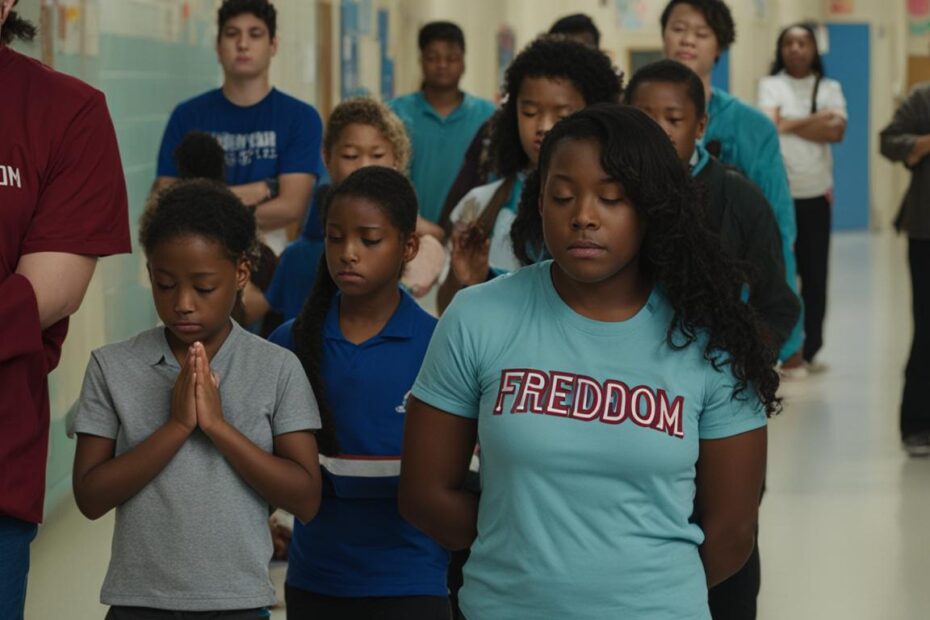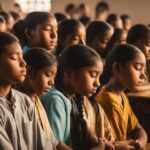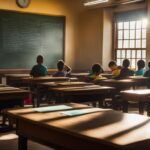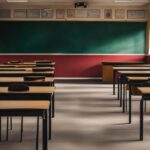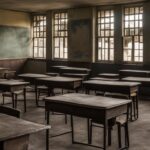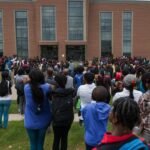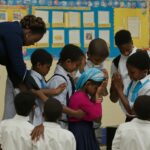Public schools have long been a subject of debate when it comes to prayer and religious expression. Many questions arise: Is prayer allowed in public schools? What are the boundaries of religious expression in educational institutions? In this article, we delve into the legal complexities surrounding prayer in public schools and provide insights into recent guidance from the U.S. Department of Education.
Key Takeaways:
- Public schools cannot prevent constitutionally protected prayer or risk losing federal funding.
- While public school officials cannot encourage prayer, students, teachers, coaches, and other employees have the right to engage in private religious expression.
- The U.S. Department of Education provides guidelines on prayer in schools, dress codes, excused absences, and more.
- Prayer in public schools intersects with the separation of church and state, a constitutional principle that prevents promoting a particular religion.
- School districts must navigate the legal complexities and strike a balance between respecting students’ rights and adhering to constitutional principles.
The Latest Federal Guidance on Prayer in Public Schools
The U.S. Department of Education has recently released updated guidance for public school districts regarding constitutionally protected prayer in schools. This guidance aims to provide clarity on the rights of students, teachers, coaches, and other employees to engage in private religious expression while ensuring compliance with the principles of the First Amendment.
According to the guidance, schools can continue to offer a moment of silence, but they cannot encourage or discourage students from praying during that time. Students have the right to pray during or outside of class to the same degree they are allowed to make any other kind of expression. It is important to note that teachers, coaches, and other employees may pray when they are not acting in their official capacities and as long as it does not result in the coercion of students.
The guidance also addresses the permissibility of prayers by speakers at events and graduations. While schools cannot promote or participate in religious activities, they must allow for the expression of diverse beliefs and provide a welcoming and inclusive environment for all students.
“Students do not shed their constitutional rights to freedom of speech or expression at the schoolhouse gate.” – U.S. Supreme Court
The updated federal guidance serves as a valuable resource for school districts, helping them navigate the legal complexities surrounding prayer in public schools. By adhering to these guidelines, schools can strike a balance between respecting the rights of individuals to express their religious beliefs and maintaining the constitutional principle of the separation of church and state.
| Key Takeaways | |
|---|---|
| Students’ Rights | Students have the right to engage in private religious expression, including prayer, to the same degree they are allowed to make any other kind of expression. |
| Teachers and Employees | Teachers, coaches, and other employees may pray when they are not acting in their official capacities and as long as it does not result in the coercion of students. |
| School Events | Schools must allow for the expression of diverse beliefs and provide a welcoming and inclusive environment, while not promoting or participating in religious activities. |
| Legal Compliance | The federal guidance helps school districts navigate the legal complexities and strike a balance between respecting religious freedom and upholding the separation of church and state. |
It is essential for school districts to familiarize themselves with the latest federal guidance on prayer in public schools to ensure they are providing a fair and inclusive educational environment for all students, regardless of their religious beliefs.
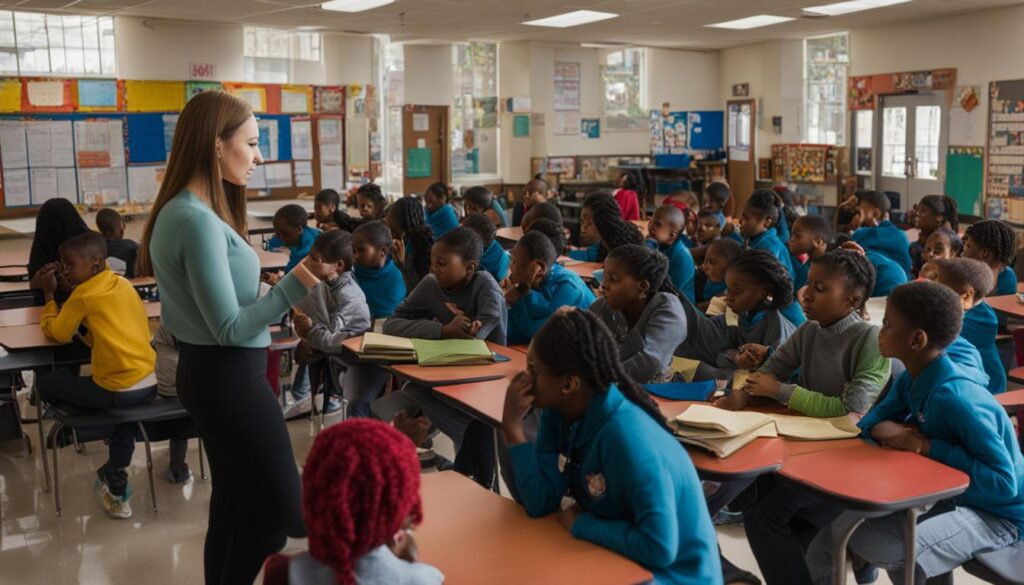
The Latest Federal Guidance on Other Forms of Religious Expression
In addition to addressing prayer in public schools, the updated guidance from the U.S. Department of Education also sheds light on other forms of religious expression. It recognizes that students have the right to distribute religious literature to their classmates, following the same rules as distributing any other material. This means that schools cannot discriminate against religious literature and must allow students to freely share their beliefs.
Furthermore, the guidance clarifies that while public schools cannot provide religious instruction, they are permitted to teach about religion as part of subjects like history and literature. This ensures that students have a comprehensive understanding of different religious beliefs and practices, fostering a respectful and inclusive educational environment.
The updated guidance emphasizes that when students express their religious beliefs through assignments, their work should be evaluated based on academic standards rather than the religious content. This ensures that students are not penalized or discriminated against based on their religious beliefs.
Overall, the latest federal guidance on religious expression in public schools aims to strike a balance between protecting students’ rights to religious freedom and upholding the principles of the First Amendment. By providing clear guidelines, schools can create an inclusive environment where students can freely express their religious beliefs while respecting the diverse beliefs of others.
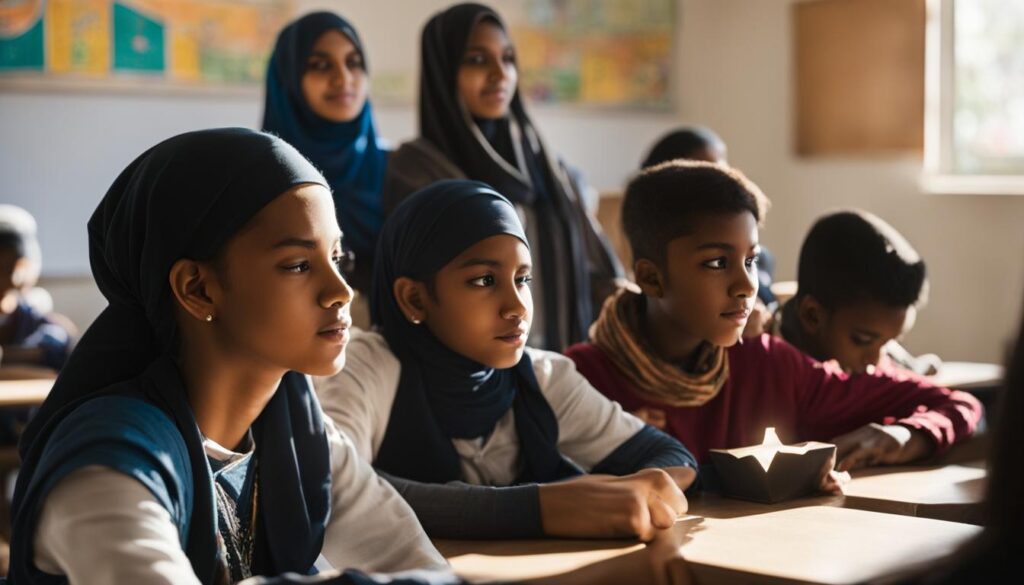
Legal and Constitutional Considerations for Prayer in Public Schools
The debate over prayer in public schools is closely intertwined with the legal and constitutional principles surrounding the separation of church and state and the First Amendment. These considerations play a crucial role in defining the boundaries of prayer in public schools and ensuring that students’ rights to religious expression are protected.
The principle of separation of church and state, derived from the Establishment Clause of the First Amendment, prohibits public school officials from promoting a specific religion or engaging in activities that endorse or favor one religion over others. This means that public schools must remain impartial and neutral with respect to religion, creating an inclusive environment for students of all faiths and beliefs.
The First Amendment also guarantees individuals the right to freedom of religion, including the right to engage in private religious expression. Therefore, while public school officials cannot lead or encourage prayer activities, students, teachers, coaches, and other employees retain their right to engage in private religious expression as long as it does not result in the coercion of others or disrupt the educational environment.
| Separation of Church and State | First Amendment and Prayer in Schools |
|---|---|
| Principle derived from the Establishment Clause of the First Amendment | Guarantees freedom of religion and protects individuals’ right to private religious expression |
| Prevents public school officials from promoting a specific religion | Public school officials cannot lead or encourage prayer activities |
| Requires public schools to create an inclusive environment for students of all faiths | Students, teachers, coaches, and other employees have the right to engage in private religious expression |
“Public schools must adhere to constitutional principles and ensure that students’ rights to religious expression are protected while maintaining neutrality towards religion.” – U.S. Department of Education Guidance
The debate surrounding prayer in public schools continues to raise important questions about how to strike a balance between religious freedom and the constitutional principles of neutrality and inclusivity. Clear guidelines and policies, informed by legal analyses and constitutional interpretations, are crucial for school districts to navigate these challenges and ensure that the rights of all students are respected.
https://www.youtube.com/watch?v=NwQJo1La1-I
Implications and Challenges for School Districts
School districts face various implications and challenges when it comes to prayer in schools. Navigating the legal complexities surrounding this topic requires a delicate balance between respecting students’ rights and adhering to constitutional principles. To establish appropriate boundaries and policies, school officials may require guidance from legal experts familiar with the intricacies of prayer rights in education.
One of the challenges school districts face is ensuring that prayer does not infringe upon other aspects of the educational environment. For example, schools must consider the impact of prayer on dress codes and excused absences. Accommodating students’ religious obligations while maintaining a fair and inclusive environment can be a complex task.
| Implications for School Districts | Challenges Faced |
|---|---|
| Striking a balance between respecting students’ prayer rights and upholding constitutional principles | Navigating the legal complexities of prayer in schools without promoting a particular religion |
| Ensuring that prayer does not infringe upon dress codes and other aspects of the educational environment | Accommodating students’ religious obligations while maintaining a fair and inclusive environment |
By considering these implications and challenges, school districts can work towards creating an educational environment that respects religious freedom while maintaining neutrality towards religion. It is crucial for schools to establish clear guidelines and policies that protect students’ rights while preventing the establishment of a particular religion in public schools. This requires a thoughtful approach, considering the perspectives of all students and ensuring an inclusive atmosphere for everyone.
Supreme Court Ruling on Religious Accommodations for School Employees
The U.S. Supreme Court ruling in Groff v. DeJoy has significant implications for religious accommodations in public schools. This landmark decision changed the legal standard used to review employers’ responses to religious accommodation requests, including those made by teachers, coaches, and other school employees. The ruling emphasizes the need for schools to conduct an individual analysis of the economic impact of granting the accommodation, placing a higher threshold for denying such requests.
“Schools must now carefully consider the economic impact of denying religious accommodation requests made by their employees,” says legal expert Jane Thompson. “This ruling underscores the importance of providing reasonable accommodations and respecting employees’ rights to observe their religious obligations.”
Prior to the Groff v. DeJoy ruling, schools had more discretion in denying religious accommodation requests by demonstrating that granting the accommodation would cause more than a minimal burden on the school’s operations. However, the Supreme Court’s decision shifts the burden of proof to employers, requiring them to demonstrate a significant economic impact that would result from granting the accommodation.
| Implications for School Districts | Challenges for School Districts |
|---|---|
| Schools may face increased pressure to grant religious accommodation requests from their employees. | Schools must balance the religious rights of employees with the need to maintain operational efficiency and fairness for all staff members. |
| Employees may be more inclined to assert their rights to religious accommodations. | Schools may need to review and update their policies and practices regarding religious accommodations. |
| Administrators may require training on the legal obligations and implications of religious accommodations. | Schools must ensure that the provision of religious accommodations does not infringe upon the rights of other employees or create a perception of preferential treatment. |
It is important for school districts to consult legal experts and formulate clear policies and procedures regarding religious accommodations in light of the Groff v. DeJoy ruling. By doing so, schools can navigate this complex area of law while respecting the rights of their employees and maintaining equal treatment for all staff members.
Misconceptions and Misinformation about Prayer in Schools
Despite ongoing discussions and legal guidance on prayer in public schools, misconceptions and misinformation continue to circulate. It is crucial to address these misconceptions and provide accurate information to promote understanding and clarity on the topic.
One common misconception is that recent Supreme Court rulings have opened the door for school-sponsored prayer. However, it is important to clarify that schools must maintain neutrality towards religion, as mandated by the First Amendment. The Supreme Court ruling in Kennedy v. Bremerton School District protected a coach’s right to private prayer but did not authorize school-led or -sponsored prayer.
“Schools must uphold the principles of religious freedom while respecting the diverse beliefs of students and preventing the establishment of a particular religion.”
Another misconception relates to the notion that prayer is completely banned in public schools. In reality, students, teachers, coaches, and other employees have the right to engage in private religious expression, as affirmed by recent federal guidance. Public schools cannot encourage or discourage prayer but must allow individuals to exercise their rights to the same degree as any other form of expression.
The presence of misinformation about religious freedom in schools can hinder productive conversations and lead to misunderstandings. It is essential to dispel these misconceptions and ensure accurate information is shared to foster an environment of respect, inclusivity, and understanding in our public school systems.
Addressing Common Scenarios and Questions
In the context of prayer in public schools, various scenarios can arise that raise questions about the constitutionality and appropriateness of prayer in specific situations. This section explores a few common scenarios and provides insights based on legal and constitutional considerations.
Scenario 1: A Muslim Teacher Praying in her Classroom
In this scenario, a Muslim teacher wishes to pray in her classroom during a break or before or after school hours. According to the U.S. Department of Education’s guidance, teachers have the right to engage in private religious expression when they are not acting in their official capacities. As long as the teacher’s prayer does not result in the coercion or promotion of a particular religion, it is constitutionally protected.
Scenario 2: A Jewish Student Feeling Pressured to Participate in a Christian-Led Prayer
Public schools must maintain religious neutrality and ensure that students from all backgrounds feel included and respected. If a Christian-led prayer is creating an environment where a Jewish student or any other student feels pressured or excluded, it could raise concerns about potential violations of the establishment clause of the First Amendment. Schools should address such situations promptly and foster an environment that respects the diverse beliefs of all students.
Scenario 3: Guest Speaker Teaching about the Bible in a Literature Class
Teaching about religion as part of subjects like history and literature is permissible in public schools. However, it is essential to approach the subject matter in an objective and academic manner, ensuring that the teaching does not promote or endorse any particular religious belief. The guest speaker should present the information in a secular context and emphasize the educational value of understanding religious texts within the literature curriculum.
It is crucial for school districts to consider these scenarios and consult legal experts to ensure that they adhere to the constitutional principles surrounding prayer in public schools. By navigating these complexities, schools can create an environment that respects religious freedom while honoring the diverse beliefs of students.
| Scenario | Key Considerations |
|---|---|
| A Muslim Teacher Praying in her Classroom | Teachers have the right to private religious expression when not acting in an official capacity. |
| A Jewish Student Feeling Pressured to Participate in a Christian-Led Prayer | Schools must ensure religious neutrality and prevent the coercion or exclusion of students based on their beliefs. |
| Guest Speaker Teaching about the Bible in a Literature Class | Teaching about religion in an academic context is permissible, but it must be presented objectively and without endorsing a specific religious belief. |
Conclusion on Prayer in Public Schools
The debate surrounding prayer in public schools is multi-faceted, encompassing legal, constitutional, and ethical considerations. It is essential to strike a delicate balance between protecting individuals’ religious freedom and upholding the First Amendment’s principle of separation of church and state.
While students, teachers, coaches, and other employees have the right to engage in private religious expression, public schools must maintain neutrality towards religion. Clear guidelines and policies are necessary to ensure that all students, regardless of their beliefs, feel included and respected.
It is important to remember that public schools are not religion-free zones, and students have the right to engage in private prayer or religious expression to the same degree as any other form of expression. However, school officials cannot promote or endorse religious activities or coerce students to participate.
By navigating the complexities of prayer in schools, adhering to legal boundaries, and fostering an inclusive environment that respects the diversity of beliefs, public schools can provide a welcoming atmosphere where religious freedom is protected, and every student feels valued and included.
FAQ
Is prayer allowed in public schools?
Yes, public school students, teachers, coaches, and other employees have the right to engage in private religious expression, including prayer.
Can public schools encourage or discourage prayer?
No, public school officials cannot encourage or discourage prayer. However, schools can offer a moment of silence for students to engage in private prayer if they choose.
What forms of religious expression are allowed in public schools?
Students have the right to distribute religious literature, and schools can teach about religion as part of subjects like history and literature. However, schools cannot provide religious instruction.
How does the separation of church and state apply to prayer in schools?
Public schools must maintain neutrality towards religion and cannot promote a particular religion. However, they must also ensure that students’ rights to religious expression are protected.
What are the challenges and implications for school districts regarding prayer in schools?
School districts must navigate the legal complexities and strike a balance between respecting students’ rights and adhering to constitutional principles. They may need guidance from attorneys to determine appropriate boundaries and policies.
What is the Supreme Court ruling on religious accommodations for school employees?
The ruling in Groff v. DeJoy raised the threshold for denying religious accommodation requests from employees, requiring schools to conduct an individual analysis of the economic impact of granting the accommodation.
Are there misconceptions about prayer in schools?
Yes, the Supreme Court ruling in Kennedy v. Bremerton School District protected a coach’s right to private prayer but does not allow for school-sponsored prayer. Public schools must remain neutral towards religion.
How does the Supreme Court ruling in Kennedy v. Bremerton School District apply to specific scenarios?
The ruling allows for a Muslim teacher to pray privately in her classroom, prohibits pressuring a Jewish student to participate in a Christian-led prayer, and permits teaching about the Bible in a literature class while maintaining neutrality.
What are the legal and constitutional considerations for prayer in public schools?
The debate over prayer in public schools raises legal, constitutional, and ethical considerations. Schools must uphold the principles of the First Amendment while providing a welcoming and inclusive environment.
What is the conclusion on prayer in public schools?
Clear guidelines and policies are necessary to protect religious freedom while maintaining neutrality towards religion in public schools. Schools must respect the diverse beliefs of students and prevent the establishment of a particular religion.
Source Links
- https://ing.org/what-teachers-should-know-about-prayer-in-schools-considerations-after-the-scotus-kennedy-v-bremerton-school-district-ruling/
- https://www.parkerpoe.com/news/2023/09/navigating-the-intersection-of-religion-and-public-schools
- https://www.al.com/living/2014/09/7_reasons_why_prayer_does_not.html


